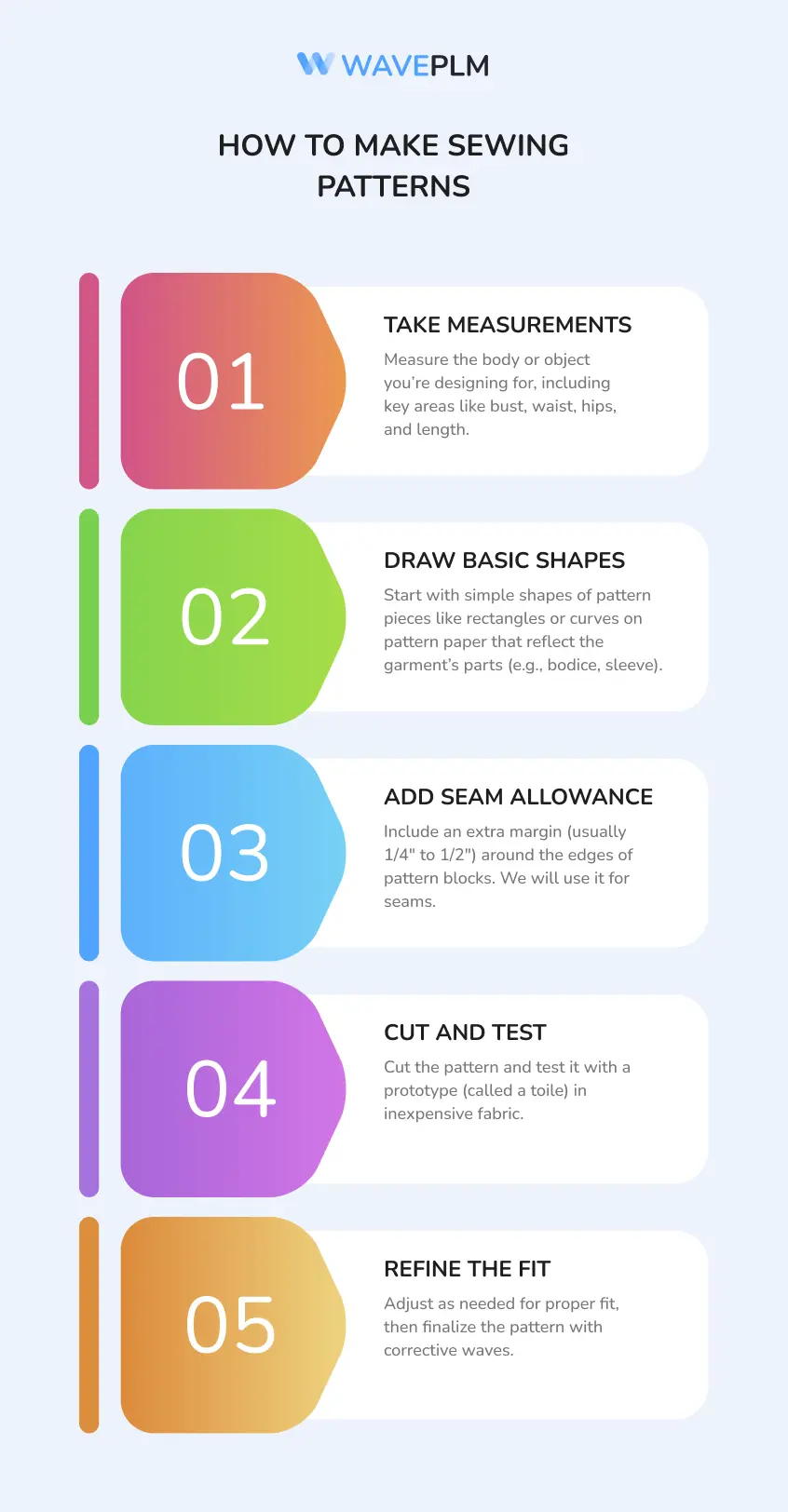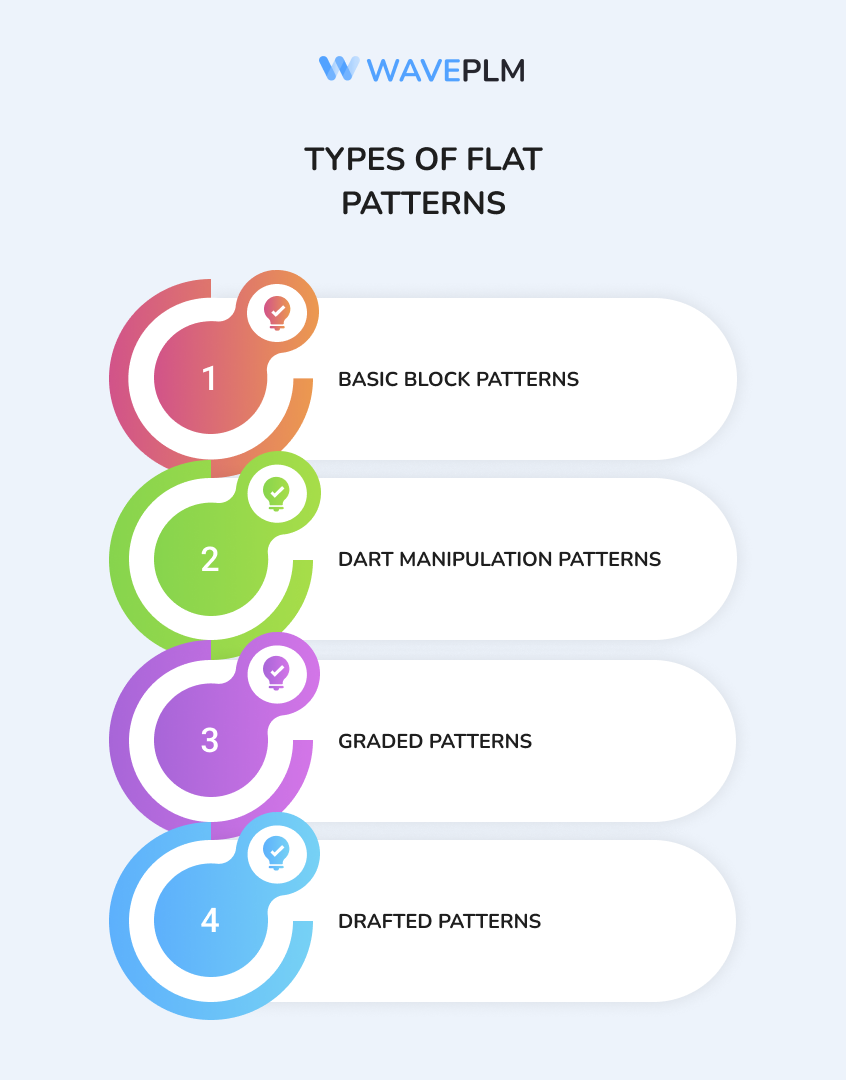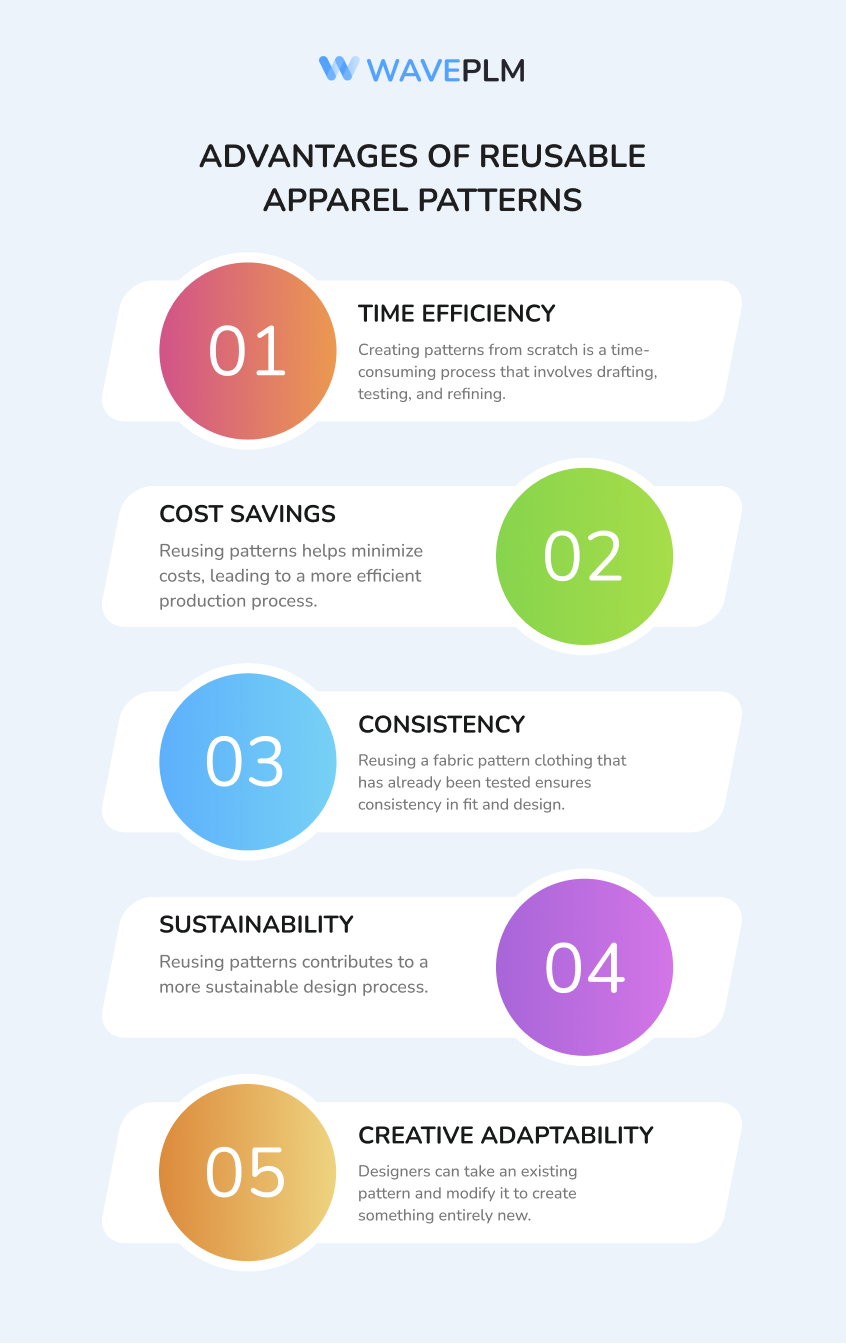
In the fast-evolving world of fashion, efficiency and creativity often go hand in hand. Designers constantly push the boundaries of style, but innovation in fashion extends beyond the runway. Behind the scenes, apparel management software like PLM (Product Lifecycle Management) and pattern libraries are becoming crucial in helping designers streamline their creative processes.
These technologies give designers the tools to organize, store, and reuse their design assets—primarily patterns—leading to faster production times and more sustainable workflows. This article examines how fashion PLM and pattern libraries help create reusable design assets and transform modern fashion design.
How to Make Sewing Patterns
To understand the general process of creating a basic pattern, let’s look at the main steps:
- Take Measurements: Measure the body or object you’re designing for, including key areas like bust, waist, hips, and length.
- Draw Basic Shapes: Start with simple shapes of pattern pieces like rectangles or curves on pattern paper that reflect the garment’s parts (e.g., bodice, sleeve).
- Add Seam Allowance: Include an extra margin (usually 1/4″ to 1/2″) around the edges of pattern blocks. We will use it for seams.
- Cut and Test: Cut the pattern and test it with a prototype (called a toile) in inexpensive fabric.
- Refine the Fit: Adjust as needed for proper fit, then finalize the pattern with corrective waves.

Understanding PLM and Pattern Libraries
PLM software refers to a system that manages the entire lifecycle of a product, from concept and design to manufacturing, distribution, and end-of-life disposal. In fashion, PLM systems allow designers and manufacturers to collaborate on apparel development in an organized and transparent way. It helps track every stage of the process, from the creation of the initial concept to the finished product hitting the shelves.
Pattern libraries, on the other hand, are collections of reusable patterns that designers use to create garments. These patterns are the blueprints for clothing, dictating how fabric should be cut, stitched, and assembled to create the final product. By digitizing these patterns and storing them in a library, fashion brands can easily access, modify, and reuse their designs, reducing the need to start from scratch for every new garment.
Together, fashion PLM and pattern libraries provide a powerful combination for creating reusable design assets in fashion.
Reusable Design Assets in Fashion
Reusable design assets mean using and adapting existing design elements. These can include patterns, materials, or color schemes. This approach helps in creating new products. In the world of fashion, reusable design assets are highly valuable, as they save time, reduce costs, and allow for quicker iterations in the design process.
Patterns are one of the most common reusable design assets in fashion. Whether it’s a simple t-shirt or a more complex jacket, every piece of clothing starts with a pattern. These patterns can be created digitally and stored in a pattern library, where they can be accessed for future use.
Fashion houses can modify existing patterns instead of creating new ones for every design. They adapt these patterns to match current trends or specific needs.
For example, a designer working on a collection of dresses might reuse an existing bodice pattern but modify the skirt portion for each individual dress. By using a fashion PLM in combination with a digital pattern library, designers can track which patterns are being reused and how they’ve been modified over time.
Types of Flat Patterns in Fashion Design
In fashion, patterns come in different forms depending on the complexity and purpose of the garment. The most common type is the flat pattern. Flat pattern making is one of the most fundamental techniques in patternmaking for fashion design and involves creating two-dimensional shapes that will be transformed into three-dimensional garments once sewn.

Flat patterns are typically categorized into the following types:
- Basic Block Patterns, or “slopers,” are basic templates used to create other patterns in design. A designer uses a basic block pattern that fits the body closely to create more complex designs by adding ease and other adjustments.
- Dart Manipulation Patterns: These patterns include darts, which are folds sewn into fabric to provide shape, often around the bust or waist. Designers often manipulate dart placement to achieve different design effects.
- Graded Patterns: These are patterns that have been adjusted to fit various sizes. Pattern grading is essential in ready-to-wear fashion, ensuring that a garment design fits across a range of body types.
- Drafted Patterns: Drafted designer patterns are created by measuring the body and drawing the pattern from scratch, instead of adapting a basic block. Designers often use this technique for custom clothing.
Patterns can be saved in a digital library for easy adaptation and reuse in future projects.
Advantages of Reusable Apparel Patterns
Reusable apparel patterns offer numerous advantages to both designers and manufacturers. Some of the key benefits include:
- Time Efficiency: Creating designer patterns from scratch is a time-consuming process that involves drafting, testing, and refining. By reusing existing patterns, designers can save time and focus on other aspects of the design process, such as fabric selection or embellishments.
- Cost Savings: Pattern development requires not only time but also materials. Each prototype, or “toile,” involves the use of fabric and labor. Reusing patterns helps minimize these costs, leading to a more efficient production process.
- Consistency: Reusing a fabric pattern clothing that has already been tested ensures consistency in fit and design. This is particularly important for fashion brands that want to maintain a specific silhouette or style across their collections.
- Sustainability: Fashion is one of the most resource-intensive industries, and reusing designer patterns contributes to a more sustainable design process. By minimizing the need for new materials and reducing waste during the patternmaking process, fashion brands can lower their environmental impact.
- Creative Adaptability: Reusable designer patterns don’t limit creativity—they enhance it. Designers can take an existing pattern and modify it to create something entirely new, whether it’s through fabric choice, embellishment, or construction techniques. The foundational structure remains, but the final product can be completely original.

PLM: A Central Hub for Efficient Pattern Management
PLM software plays a critical role in managing apparel patterns and other reusable design assets. By providing a centralized digital hub where all design elements can be stored, accessed, and modified, PLM systems ensure that everyone involved in the production process is working with the most up-to-date information.
Efficient pattern management is particularly important in large fashion houses or brands with global teams. A fashion PLM allows designers, pattern makers, and manufacturers to collaborate seamlessly, regardless of their location. Patterns can be shared digitally, modified in real time, and tracked throughout the design process.
Apparel PLM also help brands manage the grading process for patterns. As mentioned earlier, pattern grading is essential for producing garments in different sizes. PLM systems can store multiple-size versions of a pattern, ensuring that each version is correctly graded and ready for production. This eliminates the need for manual grading, which can be prone to errors.
Digital Design Storage: The Future of Fashion Resources
With the shift towards digital tools in fashion design, digital design storage is becoming a critical resource for designers. A pattern library stored digitally offers several advantages over traditional paper patterns:
- Space-Saving: Physical patterns take up a significant amount of space, especially in large fashion houses. Digital storage eliminates the need for physical storage rooms or filing cabinets, freeing up valuable space.
- Easy Access: Designers can quickly search for and retrieve digital patterns from a library, saving time compared to rifling through paper files. Many PLM systems also allow for pattern previewing and 3D modelling, so designers can see how a pattern will look on a virtual garment before cutting any fabric.
- Security and Preservation: Digital files are less prone to damage or loss compared to paper patterns. By storing patterns digitally, fashion brands can preserve their design assets for future use without worrying about wear and tear.
- Version Control: PLM software can track changes to patterns, ensuring that designers are always working with the latest version. This is particularly important in large teams, where multiple people may be working on the same project.
Conclusion
In today’s competitive fashion industry, efficiency and creativity must work in harmony. Fashion PLM systems and designer pattern libraries are powerful tools that enable designers to build reusable design assets, streamline their workflows, and create more sustainable products. By digitizing and organizing their designer patterns, fashion brands can reduce costs, speed up production, and ensure consistency across collections. As digital tools continue to shape the future of fashion, mastering PLM and pattern libraries will become essential for staying ahead in the ever-evolving world of apparel design.





Leave a Reply